Hearing the Roar! Digital inclusion and community voices beyond the humanitarian-development divide
- 13/07/2018

Annual Forum 2018. CDAC Network

 We need to reflect on how we can do things differently and put community at the heart of everything we do.
We need to reflect on how we can do things differently and put community at the heart of everything we do.
Our annual forum was held this year in Nairobi from 31 May to 1 June, convening a wide range of colleagues from both the humanitarian and development sector to discuss digital exclusion and tenuous humanitarian-development links.
Participants acknowledged the communication environment is now one where hierarchical ‘business as usual’ approaches are demonstrably less effective and on the wrong side of history. The resounding sentiment in the room was that if humanitarian and development agencies are to be relevant in a world where a woman drawing water at a well has a device that enables a conversation with the world, there has to be wide, systemic change. Moreover, harnessing the power of digital means significant reform in terms of organisational and funding structures. Achieving humanitarian and development environments that are targeted, cost-effective, connected and ‘client’-oriented will mean disruption and acceptance there are many new actors involved and being open to different approaches.
In summarising insights from the forum, Dr Sharath Srinivasan of Africa’s Voices Foundation identified the following key points:
- A nexus between community and citizen engagement, and communication, technology and data needs to be further established, in order to clearly define the linkages and opportunities for adoption in humanitarian action.
- It is important to define “who” will be engaged by organisations in the drive to achieve accountability to affected communities or undertake communication and community engagement activities. This is necessary owing to different programmatic scope that might target either populations at risk or citizens in the affected community or governments.
- Overloading communities in the drive to improve engagement, especially through application of technology and other diverse innovations, is a growing concern especially where expectations may be raised but remain unattainable.
- This will impact and erode trust in communities. A ‘cautious balance’ should be maintained in the adoption of new and existing approaches to communication and community engagement (CCE).
- A change in mind-set and incentivising certain ways of working, as well as building partnerships with local NGOs, are critical ways in which organisations can achieve the ‘how’ and ensure positive, lasting impact.
- Digital technologies remain critical enablers for CCE. It is the catalyst that is driving the communication revolution in humanitarian and development contexts, as well as influencing private sector partnerships, which have bolstered information platforms, data flows, wider connectivity and livelihood initiatives within communities.
- Digital technologies are enabling affected communities to be heard, hence moving them from being victims to mobilisers and responders in crisis situations.
Read our full report, which can be downloaded at the bottom of the page, and view presentations made during the event.
Using anthropology in #commisaid
Presented by Ingrid Gercama, Research Associate, Anthrologica
There is a need for rapid, usable intelligence and in-depth ethnographic research and analysis to better understand the affected populations. Rapid social science intelligence can help apply social science knowledge during emergencies, mesh existing knowledge with emerging issues, support a two-way flow of information between community and responder, and enable responders to act on what they are being told.
Role of IAWG in Pursuit of #Commsaid
Presented by Benson Maina, Co-Chair, IAWG, Quality & Accountability Sub-Group, Kenya
An outline of the efforts of the Inter-agency Working Group's Sub-Group on Quality & Accountability to champion communication and community engagement in the region.
Language Matters - the Gamayun Language Equality Project
Presented by Rebecca Petras of Translators without Borders
"Information you don’t understand, isn’t information", explains Petras. Through the use of 'machine learning', technology is giving direct control to affected communities to access critical information when they need it and in a language they understand. With the exception of medical information, machine learning has the ability for fast translation of content into multiple languages, while maintaining accuracy. Nevertheless, consideration must be given to ensure persons with disabilities or low literacy aren't left behind.
HDX: Making Humanitarian Data Easy to Find + Use for Analysis
Presented by Lillian Nduati, HDX Nairobi Lab Manager, and Joseph Marindi, HDX Nairobi Lab Data Manager, OCHA
The Humanitarian Data Exchange is OCHA’s open platform for sharing humanitarian data. Its objective is to make humanitarian data easy to find and use for analysis to create a common picture of needs and response.
Ushaidi
Presented by Angela Oduor Lungati, Director of Community Engagement, Ushaidi
The renowned crowd-sourcing information platform Ushaidi, adopted in Kenya, Russia and other countries, allows ingestion of community-led data streams which are the basis of analysis for mapping gaps and trends. This supports crisis response and citizen participation, particularly in situations of electoral violence. “Data is like a seed but it requires fertile land to make it meaningful,” said Lungati, referring to the fertile land as communities rich in local knowledge.
Maarifa Kona Innovation Process
Presented by Eric Mogoi N., Project Director, Maarifa Kona Innovation Lab, Adeso
The Maarifa Kona Innovation Lab aims to support community-led initiatives to prepare for and mitigate the effects of drought, particularly for pastoralist communities in Garissa and Marsabit, Kenya.




















